Kerala Kalam, "Pulluvan and snake worship"— part 1
In India, snakes are highly revered and enjoy a prolific profile in Hindu, Buddhist, or Jain legends. Guardians of underground treasures, water spirits, and rainmakers, they are raised to the status of deities.

In India, snakes are highly revered and enjoy a prolific profile in Hindu, Buddhist, or Jain legends. Guardians of underground treasures, water spirits, and rainmakers, they are raised to the status of deities. Along the Tamil roads, it is not uncommon to come across carved stones representing human-headed snakes with the hood of a cobra hidden between the roots of a tree.


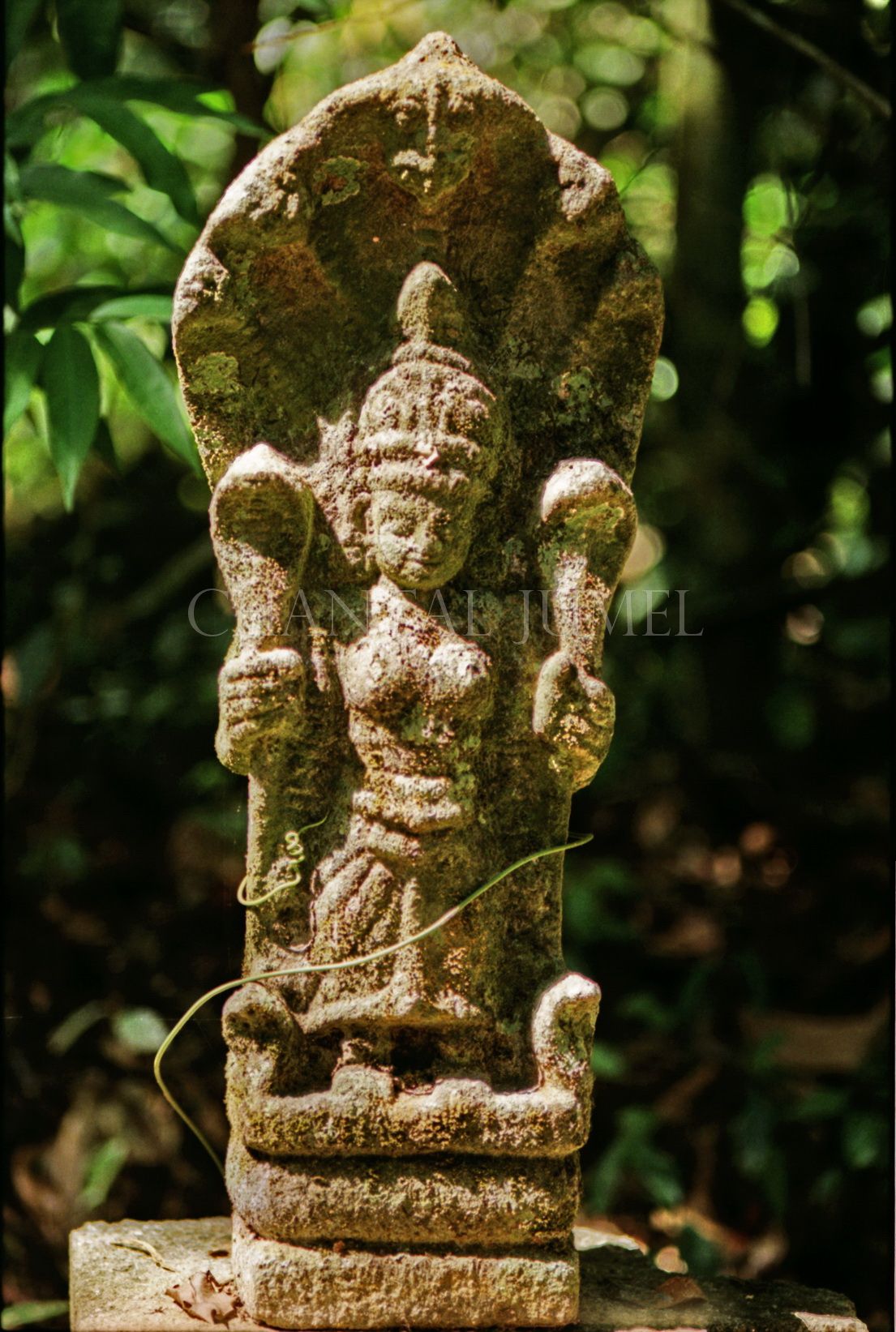

Snake worship in Kerala
Kerala lushness shelters a large number of reptiles, and a popular belief is that one should never, ever kill a snake (sarppam) as they are the messengers of the Nâga, considered as mythical and divine serpents, and therefore accessible to the prayers of humans.
According to a legend, Parasurama, (the sixth incarnation of God Vishnu) received a magic axe from the hands of Shiva, to fight the arrogant Kshatriya warriors who humiliated the Brahmins. When victory was finally won, he decided to set up the first colonies, but having no land to offer them, He threw his battle axe into the sea; as a result, the land of Kerala arose, and thus was reclaimed from the waters. The land was filled with salt and unsuitable for habitation, so Parasurama invoked the Snake King Vasuki, who spat holy poison and converted the soil into a fertile lush green land. But when Brahmins finally decided to live there, a merciless battle opposed them to the Nâga people. Parasuraman had to intervene and ordered his warriors to dedicate a place to the snakes on their property, which is still known today as sarppakâvu.
Some temples have an open-air sanctuary built on an east-west axis; a lush grove with intertwined wild grasses and vines assaulting the surrounding trees. No clearing is undertaken out of respect for the snakes. The place encloses carved stones representing Nâga and their worship brings well-being and prosperity to the family and its descendants. The wrath and curse of the snake-gods manifest when the sanctuary is neglected or destroyed, or when daily rituals are disregarded. The consequences of this imprecation are manifold and can affect the prosperity of the family, direct or indirect, as well as its descendants. The most common ailments are barrenness, infant death, poverty, blindness, leprosy, or other skin diseases.



Pulluvan, the travelling bards
The Pulluvan are itinerant bards and worshippers of Nâga also called sarppam or pambu in Kerala. Until recently, they belonged to the so-called untouchable castes, despite enjoying a certain prestige in rural Kerala. Along with their wives, the Pulluvatti, they share the hereditary charge of singing daily in the temples devoted to the serpent-gods. They also offer their services to families and move from house to house singing and invoking the benediction for the benefit of a family member or his entire lineage. Some Pulluvan are attached permanently to the service of a temple whether it is a modest village shrine or a large temple.
A legend tells that it was Shiva and other gods who gave them their instruments: the vîna; a one stringed fiddle, the pulluvan-kutam, literally "pulluvan pot" to outline the rhythmic cycles, and small bronze cymbals called kaimani. During Onam season, the songs are related to the legendary king Mahabali, to God Krishna’s deeds, to coconuts, and rice harvest.

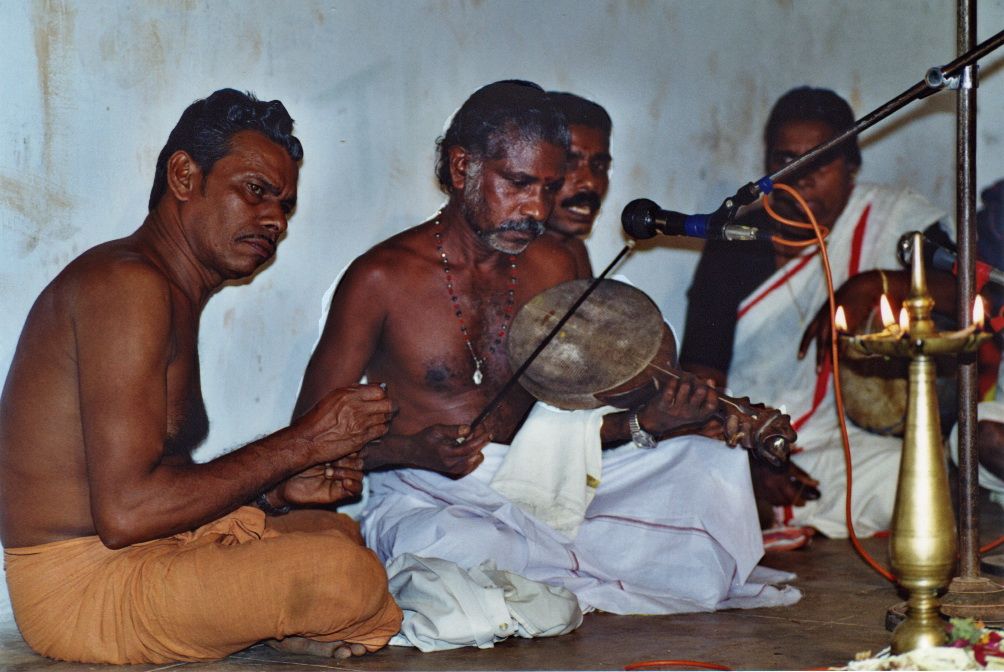
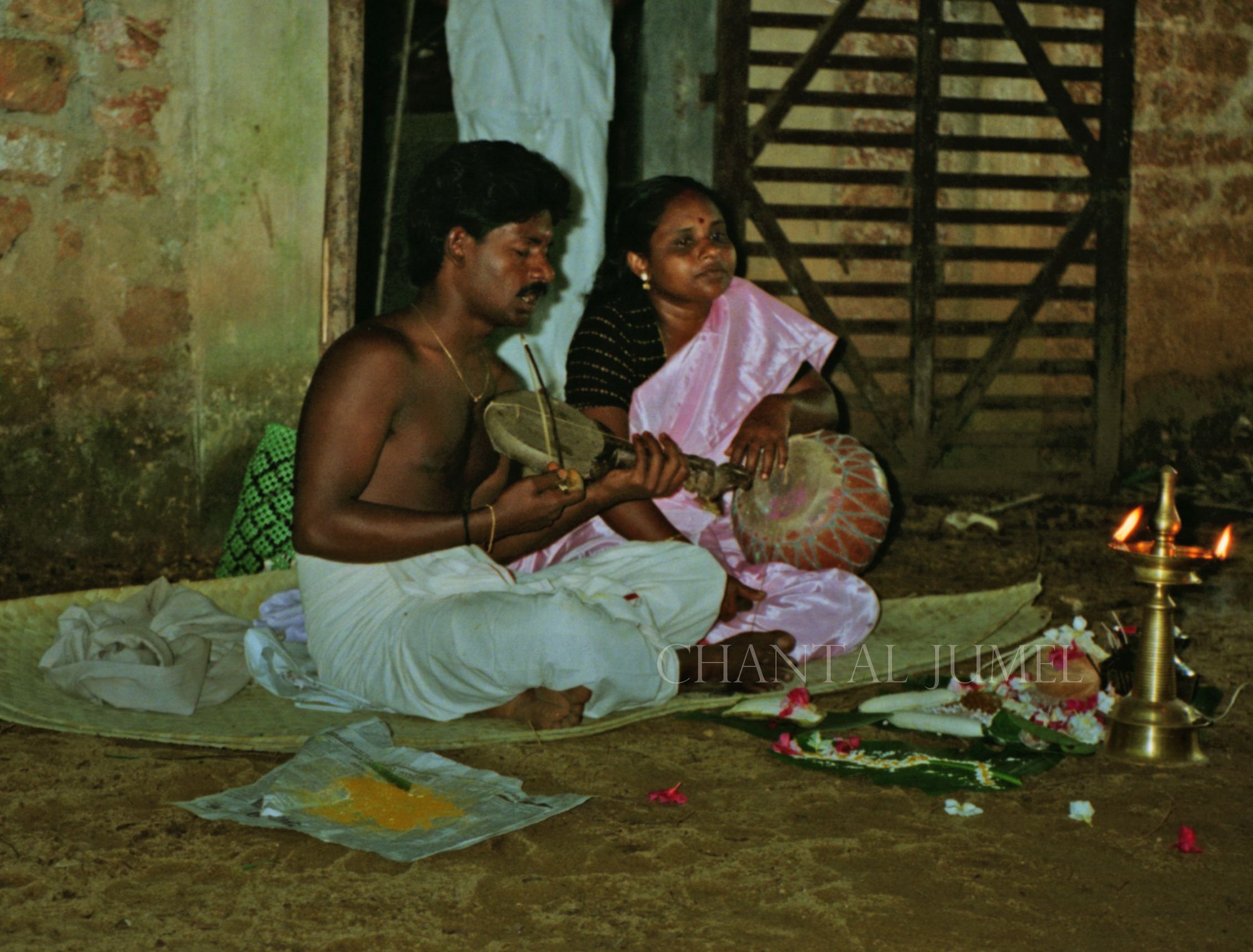
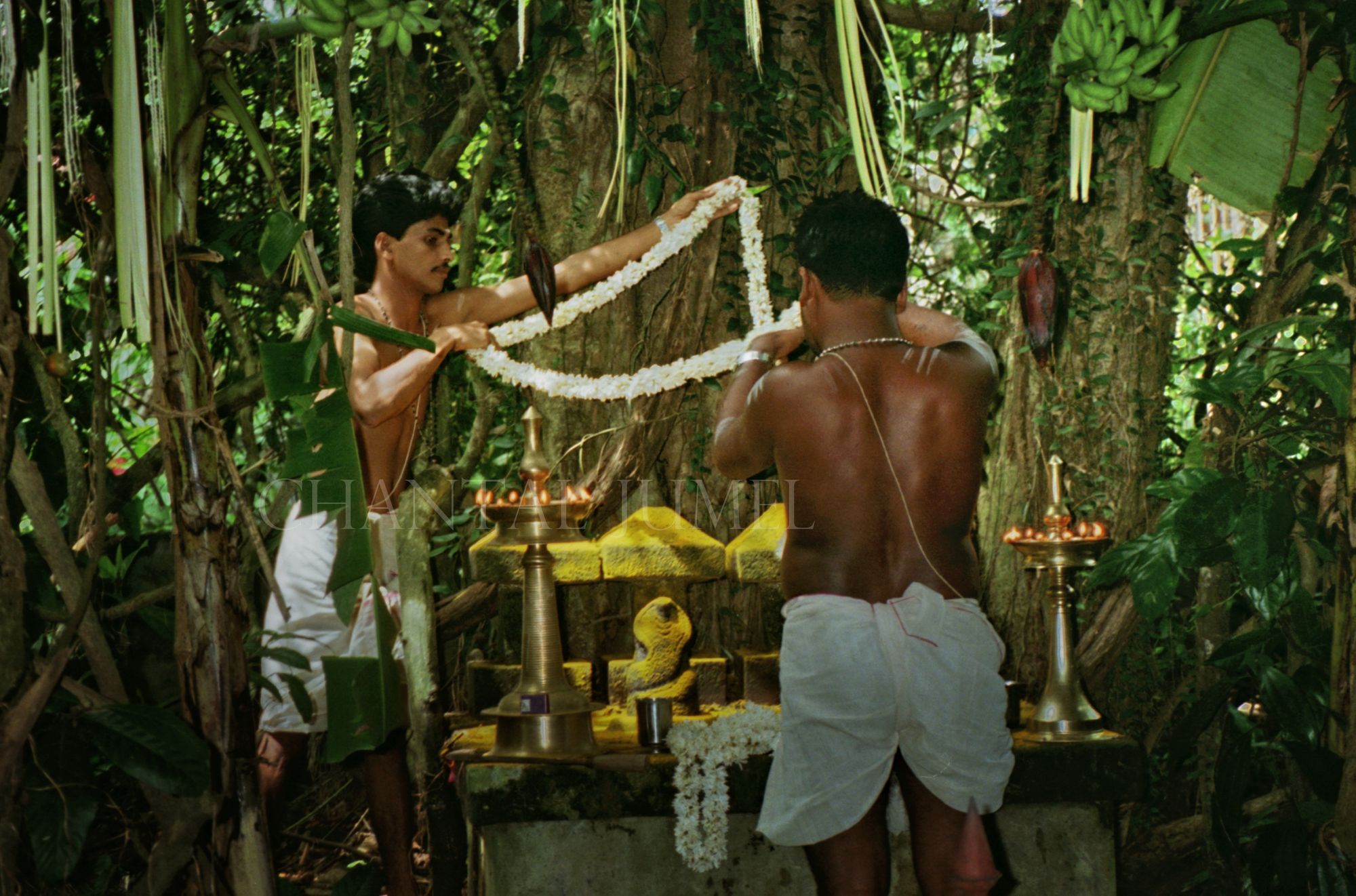

Temples for the Nâga
There are four large temples in Kerala dedicated to snake worship, but the most important one is that of Mannarasala in Haripad (Alappuzha district). Thousands of granite Nâga sculptures nest in a lush grove that provides a peaceful and tranquil environment. The sanctuary houses two idols: Nâgarâja (king of serpents) and Sarppayaksi (queen of serpents). Couples seeking fertility come here to worship, and upon the birth of a child come back to hold thanksgiving ceremonies and offer sometimes, a new snake idol. The most common offering is called nurum pâlum, a special oblation prepared with rice and turmeric powder mixed in cow's milk. This food is placed at the feet of snake steles decorated on this occasion.
Even today, the central figure of the temple ceremonies is a priestess called Valiyamma. According to the instructions of the mythical ancestor Nâgarâja, only a descendant of the original “Mother” can consecrate the place. The eldest daughter-in-law of the ancestral Namputiri clan in Mannarasala residence is bestowed with the duty of performing pujas. Upon the death of a priestess, another woman assumes the function. She takes a vow of celibacy and lives like a hermit near the sanctuary in a separate building. To this day, it is Umadevi who replaces Savitri Antarjjanam who died in 1993. When she does not perform the many daily ceremonies, she gives an audience to the devotees who visit the temple. At a certain time during the day, they flock in a single line and stop for a short time in front of her open door in the hope to receive her darshan and blessings. She listens with folded hands to the prayers of each one and, in a barely audible murmur, gives her instructions.
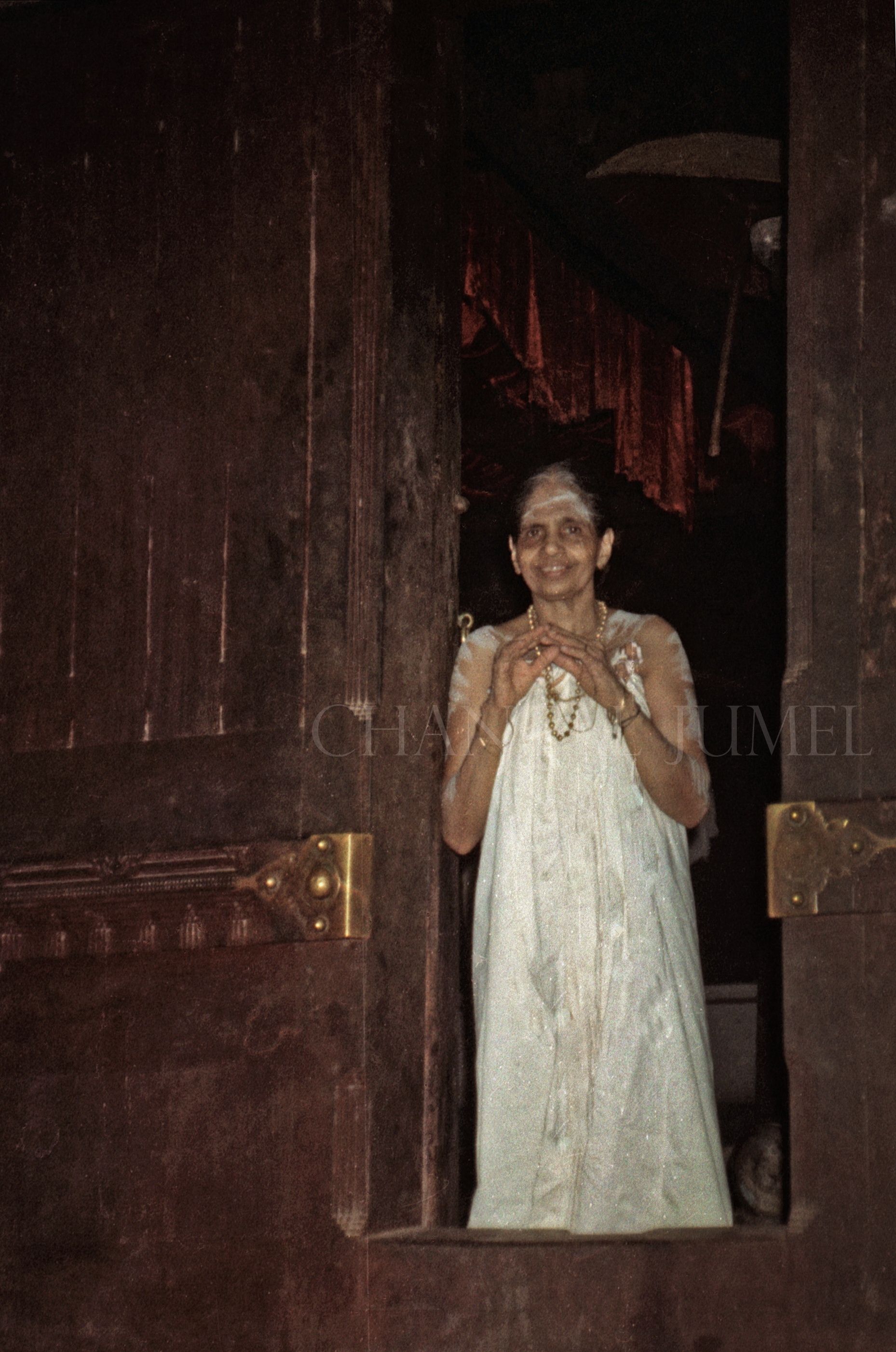

The temple celebrates in great pomp several dates in the year, and each month, the Namputiri men from the clan draw a kalam representing Nâgaraja. The divine body has the shape of a square divided into 81 parts and food offerings are placed on each section. The four angles of the square end up in loops except on one side extending into a tail and a hooded Nâga head.



The article is a translated excerpt from my book : "Kolam et Kalam, peintures rituelles éphémères de l'Inde du Sud", Editions Geuthner, Paris 2010.
